Expert’s Rating
Pros
- Appealing design
- Strong camera system
- Rapid charging
- Clean software
Cons
- Average battery life
- Bloatware starting to encroach
- Performance could be better
Our Verdict
Motorola has produced a competitive flagship phone with a stellar design, strong camera, rapid charging, and beautifully clean software. There are some slight drawbacks with performance and battery life, and it’s technically more expensive than its predecessor, but this is otherwise a strong alternative to the usual flagship crowd.
Brick by stylishly curved brick, Motorola has rebuilt its reputation for making high quality and desirable flagship phones.
2023’s Motorola Edge 40 Pro might not have been one of the very best phones in its class, but it still made an impression with its appealing design, rapid display, and strong performance.
This year brings the Motorola Edge 50 Ultra, which faces raised expectations thanks to a more formidable name (Ultra > Pro, right?) and a £50 price bump in the UK. Motorola hopes to justify this escalation with a sharper display, a more advanced camera, and an even sleeker design.
With this sort of spec and price tag, it’s taking on some formidable opposition. Perhaps the most direct rival is the OnePlus 12, but you could also throw the iPhone 15 Plus into the mix. That’s some stiff opposition.
Design & Build
- Vegan leather or wooden finish
- Gorilla Glass Victus
- IP68 rated
In a somewhat staid smartphone field, Motorola at least seems to be willing to try something different. While its curvaceous design language is nothing particularly new, the provision of an actual wooden finish option (called Nordic Wood) is something you don’t see every day.
Sadly this wasn’t the model I received to test, so I can’t comment on how it looks or feels. The model I did receive has its own stealthy charm, with a Forest Grey vegan leather finish that lends texture and grip. The brighter Peach Fuzz option also comes in this same material.
Combined with a sandblasted aluminium frame and Corning Gorilla Glass Victus on the front, it also means that the Edge 50 Ultra is a deceptively tough phone. An accidental drop from about 1.5 metres onto a wooden floor didn’t so much as leave a dint on the device.
This robustness comes in spite of the fact that the Ultra still packs a dual-curved display, which is inherently more exposed and vulnerable. IP68 certification means it’s as water resistant as they come, too.
The Edge 50 Ultra is a deceptively tough phone
At 8.6mm, the Ultra isn’t as skinny as the Edge 50 Pro, and it’s also heavier at 197g. Even so, it remains the right side of bulky, and I found it thoroughly pleasant to wield day to day.
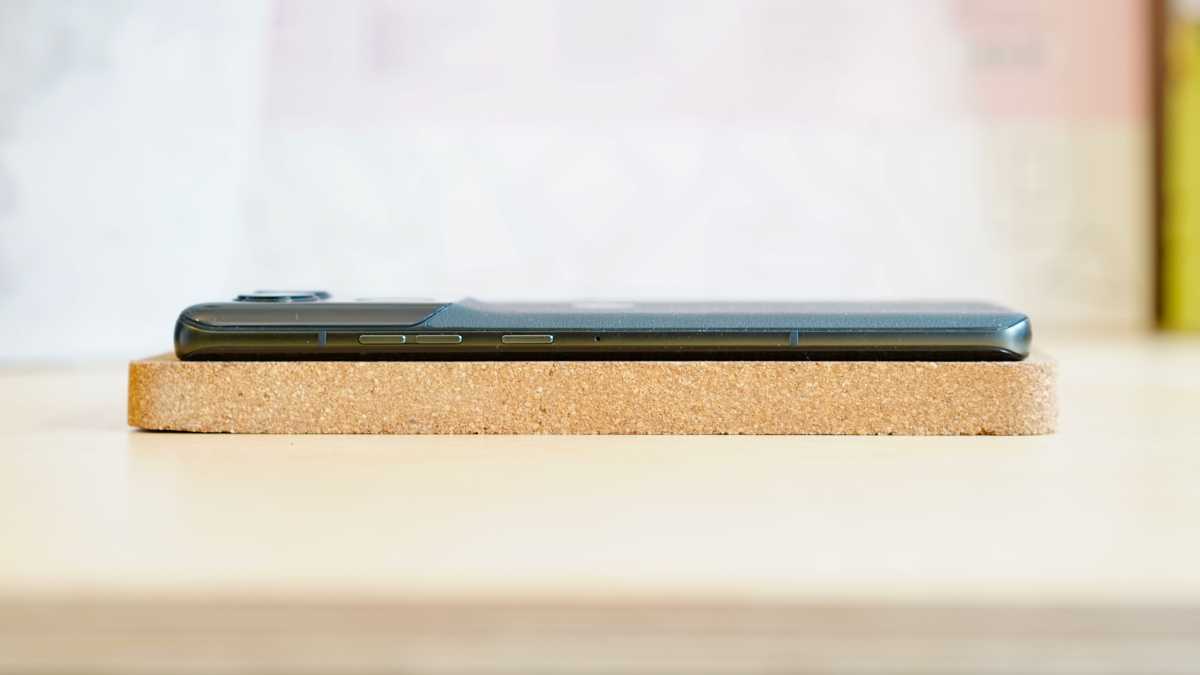
Jon Mundy / Foundry
Display
- Sharp ‘1.5K’ 144Hz pOLED
- 6.7-inch
- Clear stereo speakers
The Motorola Edge 50 Ultra’s display packs broadly similar specs to the Edge 50 Pro, in that it’s a 6.7in LTPS pOLED with a refresh rate that goes up to 144Hz.
It’s the latter that makes it stand out from its rivals on paper, which tend to top out at 120Hz, but it actually falls a little short of the Edge 40 Pro‘s 165Hz display. Not that it really matters – 120Hz is plenty, and any uptick beyond that is tricky to pick up on.
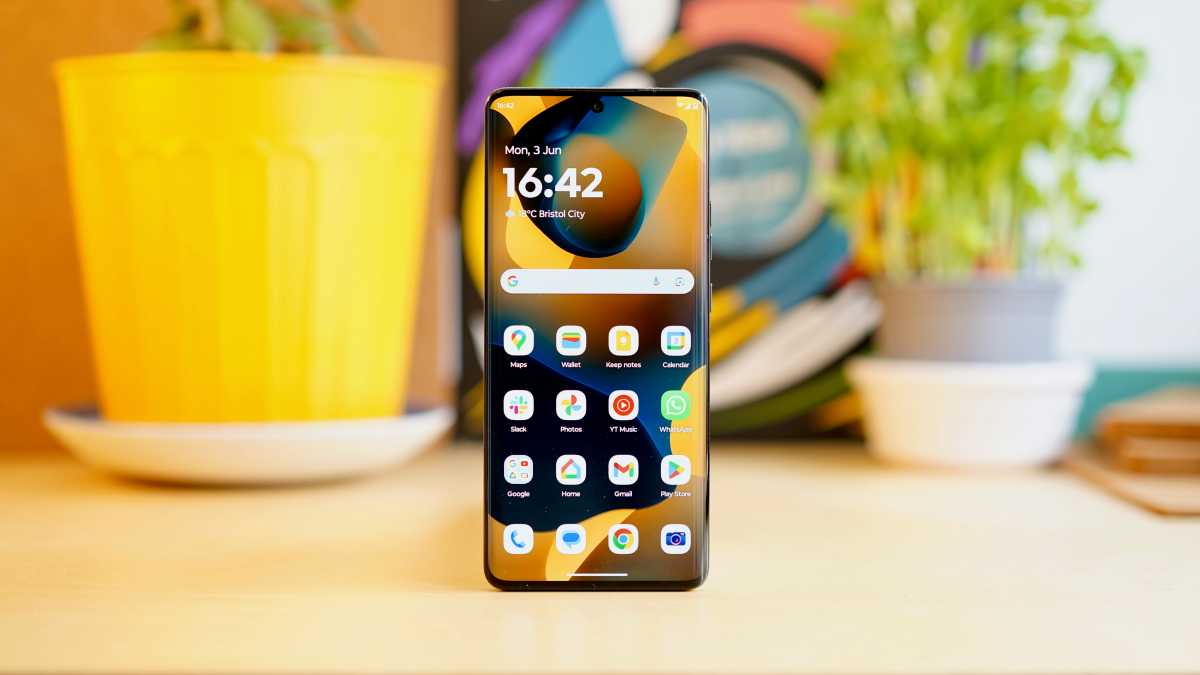
Jon Mundy / Foundry
Like the Edge 50 Pro, you get an enhanced 2712 x 1220 or 1.5K resolution, which is a little sharper than your typical FHD+ panels without scaling the heights of the OnePlus 12‘s QHD+. For me, the display is the sweet spot for me between resolution, colour accuracy and refresh rate, but others will understandably feel that the sharper the better.
The key difference between the Pro and Ultra models is one of brightness, with the Edge 50 Ultra getting to 2500 nits (vs 2000 nits) in peak conditions. That might be so, but turning auto-brightness off yielded a measurement of just 332 nits, which is way dimmer than the Pro model, and most other flagship phones for that matter. With auto-brightness active, however, I observed a top brightness of around 1250 nits when placed under bright lights.
For me, the display is the sweet spot for me between resolution, colour accuracy and refresh rate
HDR10+ is supported, and this is also described as the world’s first smartphone with a ‘Pantone Validated’ display. This manifests itself in solid colour accuracy, with an sRGB gamut coverage of 97.5% and an average Delta E of 1.29 when switched over to the Natural colour mode. Somewhat awkwardly, this is actually inferior to the results I obtained with the Edge 50 Pro, and it falls short of the very best on the market. It’s still strong in this regard, however.
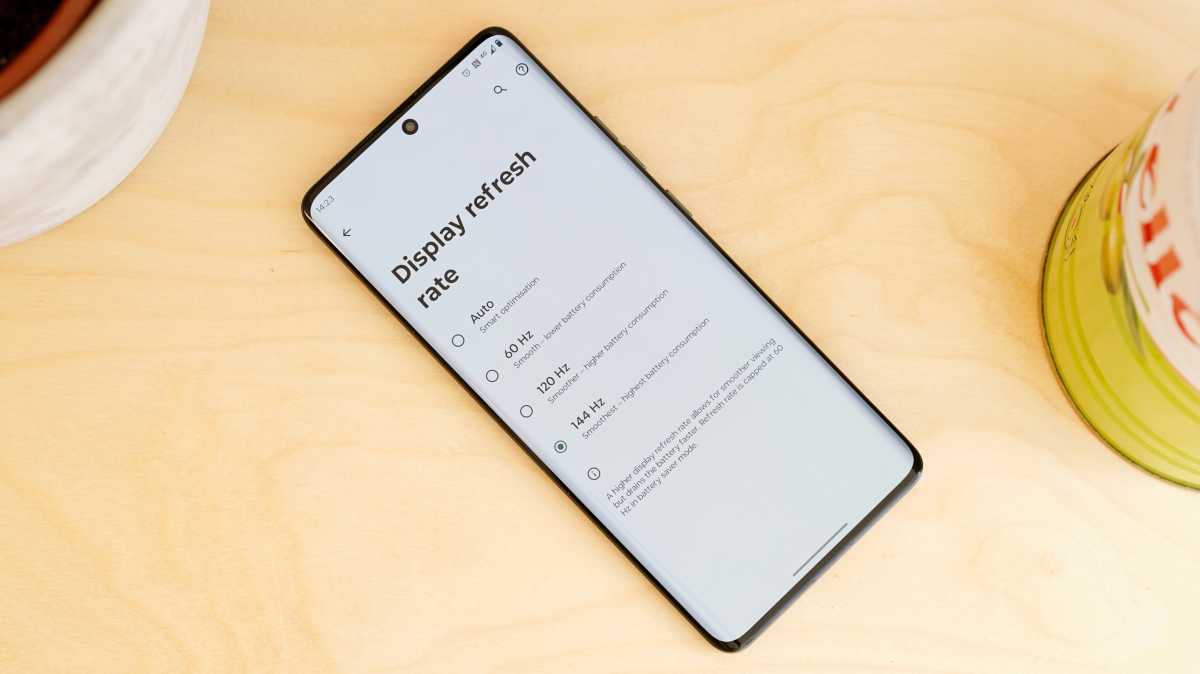
Jon Mundy / Foundry
I’m pleased to note that I didn’t experience the same false press issues with the Ultra’s curved display as I did with the Pro, likely thanks to that slightly thicker frame. It meant that my holding hand didn’t touch the sides of the screen so much while operating the phone one-handed.
In general terms, the Motorola Edge 50 Ultra screen is good, but it falls short of the OnePlus 12 screen in size, brightness, sharpness, and colour accuracy.
When it comes to audio, Motorola has supplied a pair of Dolby Atmos-tuned stereo speakers that can produce pleasingly clear and nuanced stereo sound.
Specs & Performance
- Snapdragon 8s Gen 3
- 15GB LPDDR5X RAM
- 1TB storage
Motorola has made an interesting choice with the Edge 50 Ultra’s processor. While it has moved to the latest generation of Qualcomm’s chip family, it has opted for the Snapdragon 8s Gen 3 rather than the Snapdragon 8 Gen 3.
This chip offers a broadly similar level of performance, but it’s undoubtedly a step down, with a slightly lower clock speed for its fast core and an inferior configuration for the rest of its cores.
Even more notable is the fact that the Snapdragon 8s Gen 3’s GPU is a slight step down from last year’s Snapdragon 8 Gen 2, let alone the Snapdragon 8 Gen 3. This means that the Motorola Edge 50 Ultra is technically inferior to the Motorola Edge 40 Pro when it comes to graphical performance.
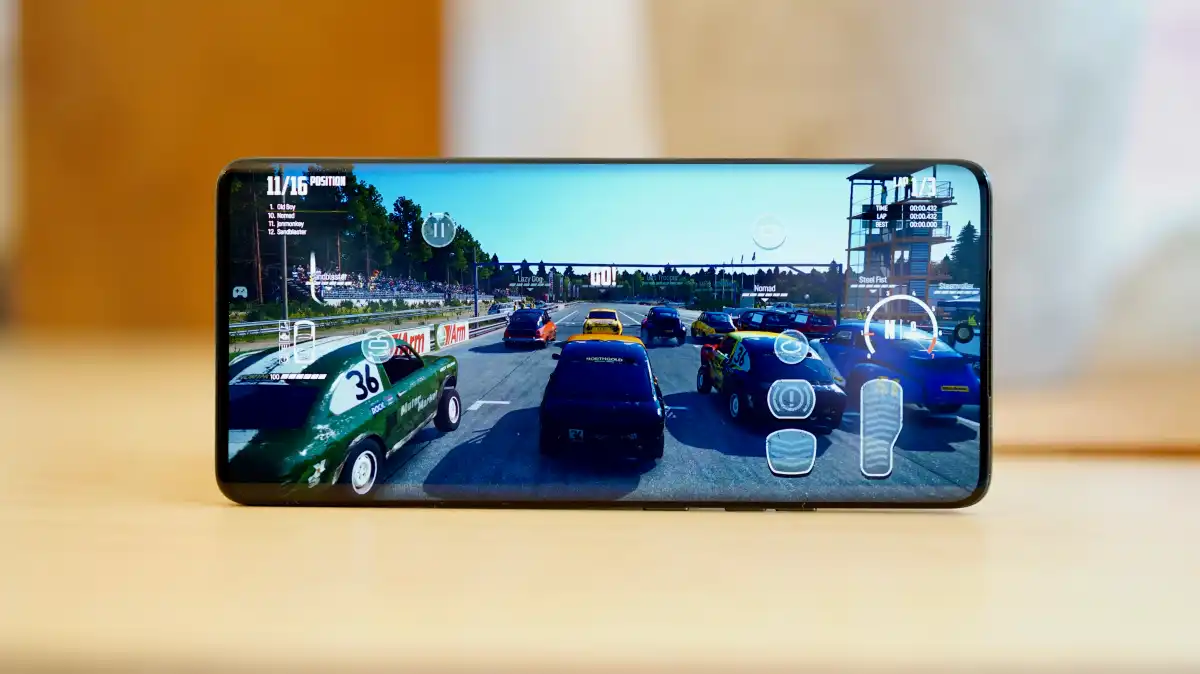
Jon Mundy / Foundry
Sure enough, the Edge 50 Ultra pulls up short of the Edge 40 Pro in our GPU benchmark tests – though it should be noted that the Ultra is running a sharper and thus more resource-intensive display. Indeed, it broadly ties with the OnePlus 12 in several of our GPU benchmarks, which is a rival phone that has its Snapdragon 8 Gen 3 offset by an even sharper QHD+ screen.
Comparisons aside, the actual practical experience of using the Motorola Edge 50 Ultra is excellent. I didn’t pick up on any hint of lag or stutter whilst multitasking, the camera app boots up quickly, and 3D games run fluidly on maxed out settings. I did find that phone heated up rather quickly when playing such advanced games, however.
The phone’s performance is aided by a hugely generous 16GB of speedy LPDDR5X RAM, which is a pretty notable inclusion even in an £850 phone. Talking of unusually capacious memory, Motorola has laid on 1TB of internal storage as standard.,
Cameras
- Main 50Mp f/1.6 sensor
- 50Mp ultra-wide
- 64Mp 3x telephoto
- 50Mp selfie cam
Motorola appears to have place a lot of resources into improving its camera system – the triple rear cameras on the Edge 50 Ultra genuinely impressed me. The main sensor is a large 1/1.3″ OmniVision OV50H, which is the same sensor that wowed us in the Honor Magic 6 Pro.
Here, aided by speedy multi-directional PDAF and OIS, it’s capable of capturing rich shots with ample clarity and depth. Its f/1.6 aperture might not be as large as the Honor’s f/1.4, but it still lets plenty of light in and creates a nice natural depth of field effect on close-up subjects.
Like the rest of the Edge 50 family, there are two main shooting modes straight out of the gate. The default mode is Natural, which shoots in a regular fashion, while Auto-enhance (AE) applies Google-like image processing.
The latter results in bolder, brighter shots, and there’s little discernible lag by way of a trade off either. It can come in handy when you’re shooting in particularly challenging scenarios, such as in low-lit indoors environments with bright daylight in the background, in which case AE will boost the lighting of your subject at the expense of a slightly overexposed background.
The triple rear cameras on the Edge 50 Ultra genuinely impressed me
However, AE shots undoubtedly take on a slightly artificial look compared to the default Natural mode, with notably boosted colours. It’s largely a matter of preference, though I did appreciate the boost it gave to the slightly more limited ultra-wide and selfie cameras. AE is active in the left-hand selfie below.


There’s good and bad news when it comes to night shots. Shooting side by side with the iPhone 15 Pro and the Pixel 8, it broadly held its own with the Pixel and wasn’t disgraced by the iPhone. In fact, in one particular shot, it was the only one of the three to properly capture the ‘Texaco’ sign on a garage.
One thing that lets the Motorola’s low light prowess down, however, is its tendency to capture a distracting amount of light flare from brighter elements. I was generally able to reframe slightly to compensate, but that’s not something you’re always going to be willing or able to do.
The other cameras don’t let the side down here, with the 64Mp 3x in particular capturing decent zoomed shots. Even at 6x, I was left impressed with the level of detail and dynamic range, and the colour tone was broadly consistent with the main sensor.
A 50Mp ultra-wide completes the rear set-up, and it’s the weakest of the three, but still manages to maintain a consistent colour tone.
Motorola appears to be using the same sensor for the selfie camera, which produces strong, detailed shots in a wide or slightly zoomed in capacity – the latter through cropping. Autofocus is a welcome provision here, locking onto the subject and helping them/you to pop against the background.

Jon Mundy / Foundry
Battery Life & Charging
- 4500mAh battery a little small
- Super-fast 125W charger included
- 50W wireless charging
The Motorola Edge 50 Ultra has a somewhat undersized 4500mAh battery running the show. That’s the same size as the Edge 50 Pro, but a little smaller than its predecessor.
With a PCMark Work 3.0 battery test score of 10 hours 5 minutes, the Motorola Edge 50 Ultra lasted around half an hour longer than the Edge 50 Pro, but falls about 50 minutes short of last year’s Edge 40 Pro. In terms of contemporary flagships, it’s definitely towards the bottom of the pack, albeit still ahead of the Pixel 8 Pro by around 30 minutes.
In general terms, I found that I was able to get through a 16 hour day of moderate usage, with the display ramped up to either a fixed 144Hz or 120Hz, and be left with around 40 to 45%. On a couple of more intensive days with a couple of hour of Slay the Spire being played, that would drop to 30 to 35%.
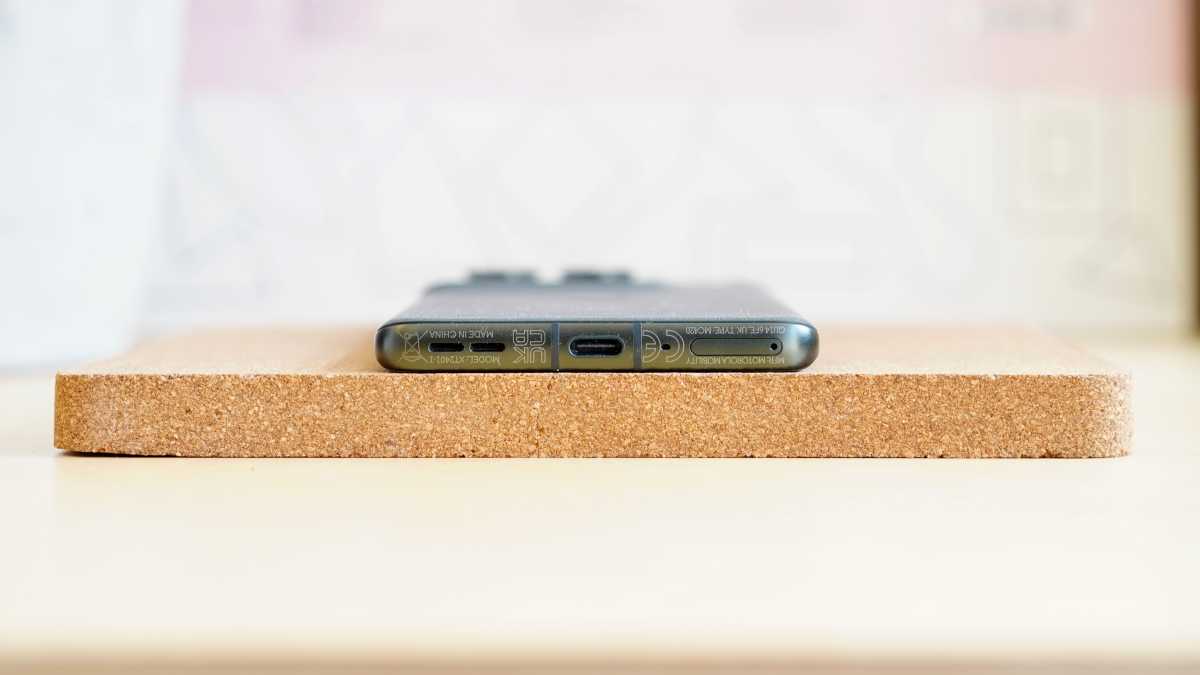
Jon Mundy / Foundry
That’s a solid result rather than a spectacular one, as the best full-sized flagships are generally good for 50% or more at the end of a regular day.
While battery life is nothing to write home about here, Motorola’s charging provision most certainly is. It bundles in a 125W charger which – with fast charging switched on in the Settings menu – got me from empty to 91% in just 15 minutes. A full charge took me just 18 minutes.
While battery life is nothing to write home about here, Motorola’s charging provision most certainly is
You also get support for 50W wireless charging, provided you have the appropriate accessory, as well as 10W reverse wireless charging – though given the phone’s unspectacular stamina, I wouldn’t recommend doing much more than a quick top up of some earphones.
Software
- Clean Android 14 UI
- Clever Motorola enhancements
- 3 OS updates, 4 years security updates
Motorola doesn’t mess with Android 14 too much, which is why it’s one of the best versions in the business. The menus, icons, and notification screens are all very much as Google intended them to be.
Where Motorola goes off script, it does so with sound judgement. Most of its enhancements are neatly rounded up in the Moto app, which offers general tips and access to custom wallpapers.
Motorola’s Gestures system can also be found here, which lets you do things like opening the camera app with a double twist of the handset, or the torch with a double chop motion.
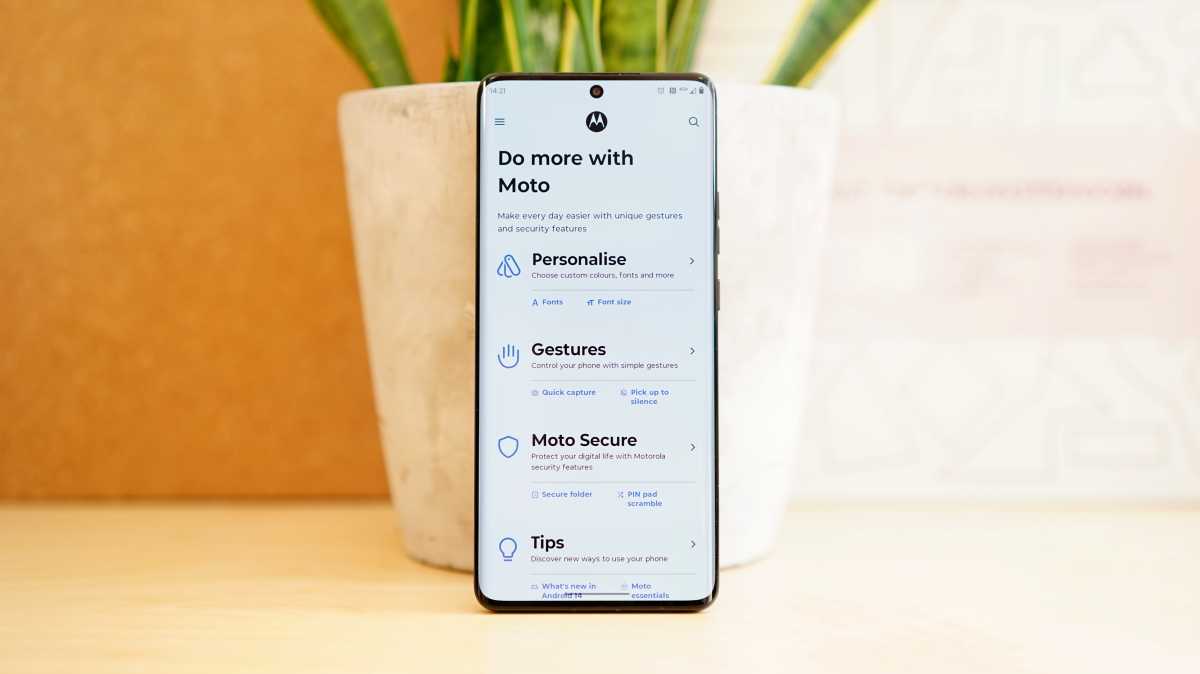
Jon Mundy / Foundry
You can also manage the Edge 50 Pro’s Edge lights system, which sees those curved screen edges put to use with notifications if you’re a screen-down kind of person. Media settings can also be found here.
I’m not sure why Motorola hasn’t featured an Always-on display option here, but it might have something to do with that smaller battery combined with the elevated refresh rate. As someone who uses either a Pixel 8 or an iPhone 15 Pro – both of which have even smaller batteries than the Motorola Edge 50 Ultra – in between reviews, it’s a feature that was sorely missed.
Motorola doesn’t mess with Android 14 too much, which is why it’s one of the best versions in the business
Unfortunately, the Edge 50 Ultra hasn’t been exempted from the bloatware that has started to encroach on the series. The Opera browser is pre-installed and prominently positioned, despite the presence of Chrome. TikTok, Facebook, LinkedIn, and Booking.com are four more unwelcome third-party app inclusions.

Jon Mundy / Foundry
Did I ask for the Bingo Blitz, Block Blast, and Woodoku games to be preinstalled? I can’t say I’d even heard of them before booting up a Motorola Edge 50 phone, but here they are nonetheless.
Motorola has improved its software support promise from the Edge 40 range, offering the guarantee of three major OS upgrades and four years of security patches. That falls well short of Samsung and Google’s seven-year flagship promise, but it’s about par for the course in 2024.
Price & Availability
The Motorola Edge 50 Ultra costs £849.99 when you buy it direct from the Motorola website. The company is offering a free set of Moto Buds+ (worth £129.99) at the time of writing.
Amazon isn’t offering up any free earphones with the Ultra, but it is currently selling the phone at a slightly discounted £829.
The Edge 50 Ultra isn’t available on contract in the UK, so you’ll have to buy it outright and pair with a SIM-only deal. Use the widget below to find an option that suits you:
That RRP positions the Motorola Edge 50 Ultra directly against some pretty hot opposition, including the OnePlus 12 (£849) and the iPhone 15 Plus (£899).
Those are the two obvious full-sized flagship rivals occupying a similar area of the market. Otherwise you’re looking at compact flagships like the Samsung Galaxy S24 (from £859) and the Xiaomi 14 (£849).
Perhaps more problematic than any of those is the Google Pixel 8 Pro. While it has a £999 RRP, it has been on the market a little longer than some of the other phones on this round-up, so can routinely be had for hundreds less.
The Motorola Edge 50 Ultra doesn’t appear to be heading for the US, where the Motorola Edge 2024 seems to be closer to the mid-range Motorola Edge 50 Pro. It’s a shame, as it would have been a welcome alternative to the usual Samsung, Apple, and Google crowd.
Should you buy the Motorola Edge 50 Ultra?
The Motorola Edge 50 is another accomplished flagship phone from the resurgent brand, though it’s not a huge upgrade over the Motorola Edge 40 Pro before it, despite costing £50 more.
Its design is sleek yet robust, while its 1.5K 144Hz pOLED display is appealing, if not best-in-class. The choice to go with a modern but slightly less than top tier processor is an interesting one, offering a silky experience but slightly inferior graphical performance.
The choice of a smaller battery seems like a bigger mistake here, and you can get better stamina from rival handsets. With that said, Motorola’s provision of a speedy 125W charger and 50W wireless charging is one of the best around.
This is also the best camera system that Motorola has ever put together, with a triple set-up that can take great shots in all lighting conditions – albeit with some troublesome light flare in Night mode. Meanwhile, Motorola’s software continues to be one of the best in the business.
Specs
- Android 14
- 6.7in, 1.5K, pOLED, 144Hz, flat display
- In-display fingerprint sensor
- Qualcomm Snapdragon 8s Gen 3
- 16GB LPDDR5X RAM
- 1TB storage
- 50Mp, f/1.6 main camera
- 50Mp ultra-wide macro camera
- 64Mp telephoto camera
- Up to 4K @ 60fps rear video
- 50Mp front-facing camera
- Dolby Atmos stereo speakers
- Dual-SIM
- Wi-Fi 802.11 a/b/g/n/ac/ax
- Bluetooth 5.4
- 4500mAh battery
- 125W charging
- 50W wireless charging
- 161.09x 72.38 x 8.59 mm
- 197g
- Launch colours: Forest Grey, Nordic Wood, Peach Fuzz






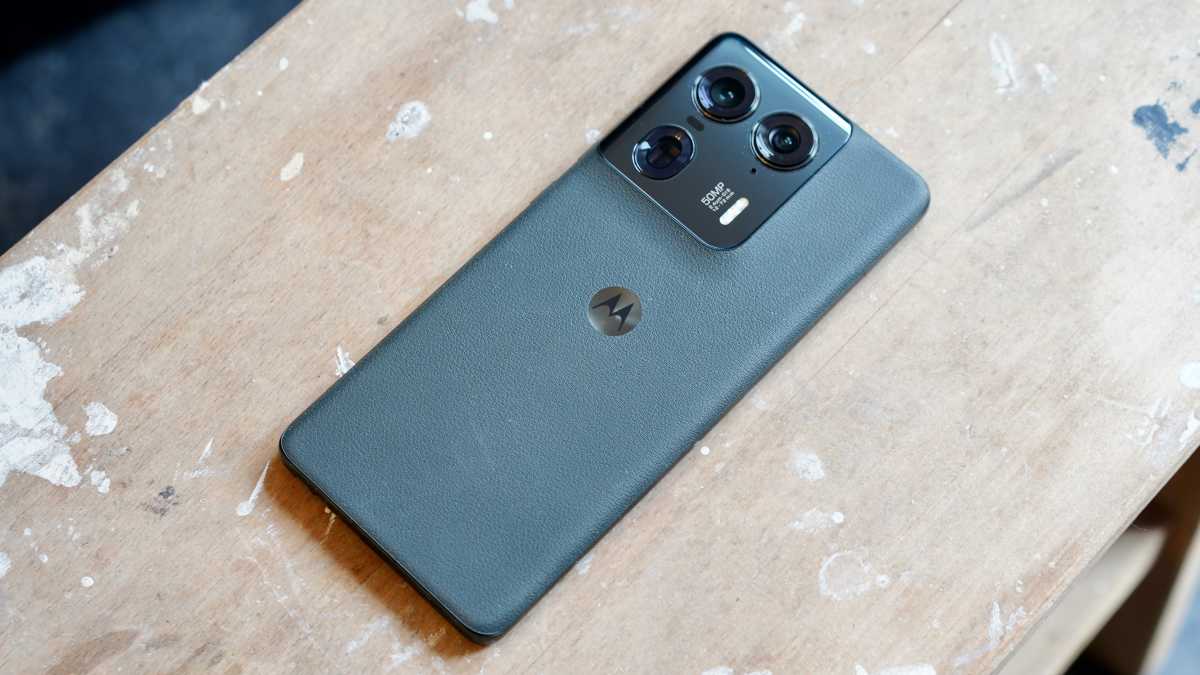

/origin-imgresizer.eurosport.com/2024/06/20/3990929-80994288-2560-1440.jpg?w=150&resize=150,150&ssl=1)





